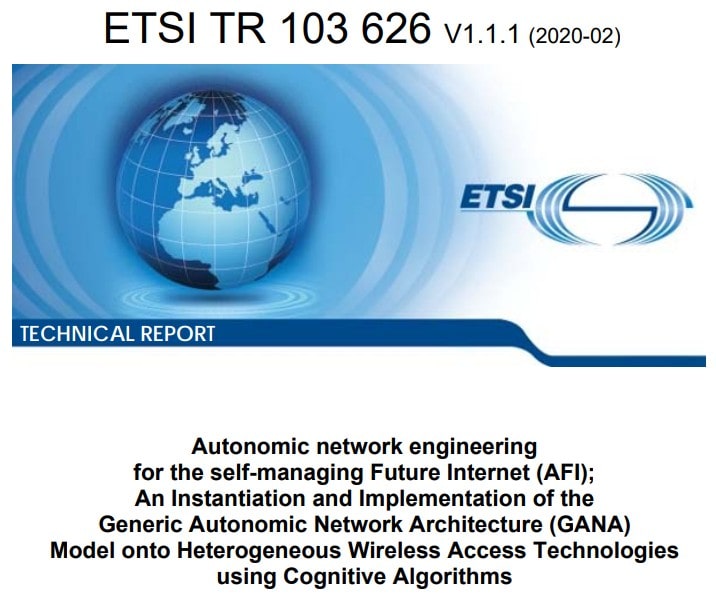TC INT working group INT AFI published White Paper in frame of 5G PoC Project
2020-06-16 Posted by Dr. Tayeb Ben Meriem (Orange), Dr. Muslim Elkotob (Vodafone) 5836 HitsThe 5G Proof of Concept (PoC) Project of ETSI WG TC INT AFI published its White Paper #6 “Generic Framework for Multi-Domain Federated ETSI GANA Knowledge Planes (KPs) for End-to-End Autonomic (Closed-Loop) Security Management & Control for 5G Networks/Services”.
Rationale
The 5G PoC White Paper #6 has now been published, and its purpose is to lay the groundwork for the standardization of “A Generic Framework for Multi-Domain Federated ETSI GANA (Generic Autonomic Network Architecture) Knowledge Planes (KPs) for End-to-End Autonomic (Closed-Loop) Security Management & Control for 5G Networks/Services”.
The White Paper is accessible for download via the INT Wiki.
ETSI TC INT has established that E2E Autonomic (Closed-Loop) Service and Security Assurance shall be achievable through the Federation of GANA Knowledge Planes (KPs) (as Platforms) that implement components for Autonomic Management and Control (AMC) intelligence for specific network segments and domains. While such an E2E Federation of KP Platforms for multiple network segments (as domains) has to be primarily considered within a single network operator administrative domain, the E2E Federation of KPs may be extended to even span multiple network operator or enterprise network administrative domains.

